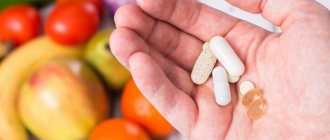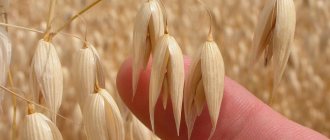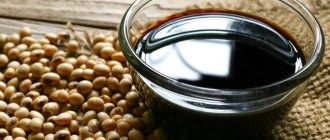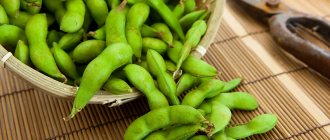Blueberries improve the functioning of the gastrointestinal tract, slow down aging and support eye health. It also relieves stress, which is important during a diet. Find out the calorie content of blueberries and include them in your diet for health benefits!
- Links to authoritative sources
Author: Kristina Lobanovskaya, doctor, practicing nutritionist Article updated: 12/27/2019
Ask a Question
Blueberries are a perennial low-growing subshrub and the spherical fruits growing on it are dark purple in color with a waxy silver coating. Blueberries are very juicy, have virtually no aroma, but have a delicate taste with pronounced sourness. Despite the presence of many useful and even unique properties, the calorie content of blueberries is on average 50 kcal per 100 grams. Therefore, it is highly valued not only in folk medicine, but also in official medicine, and is also widely used in dietetics to provide the body with the necessary vitamins during weight loss.
How many calories are in 100 g of fresh and dried blueberries?
The calorie content of fresh berries differs from that of dried berries due to different moisture content. The calorie content of fresh berries is 40 kcal per 100 g of product, which is the average value for most berries (lower only for sour cranberries, much higher for grapes). The calorie content of dried blueberries is higher than that of fresh ones due to the removal of water contained in the fruit during drying. Thus, this figure is 220 kcal/100 g.
The berries have long been used for consumption both raw and after cooking. Blueberries are an excellent medicinal product, and not only the fruits, but the leaves of the plant are used in medicine.
In the wild, berries are eaten with pleasure by:
- the Bears;
- wolves;
- foxes;
- deer;
- birds.
Application
Blueberries are harvested for consumption raw, dried, frozen and processed. It is used to make jam, jelly, compote, fruit drink, jelly, jam, juice, liqueur. The berries are ground with sugar, used as a filling for pies, and added to desserts, fruit salads and dairy products. Dried blueberries are included in many medicinal teas that are used for various diseases.
Market Analytics
- Black Lives Matter movement: reaction and consequences for the beauty industry
- COVID-19 is changing the rules of the game in the cosmetics market
- Beauty of the future: cosmetic innovations 2020
Convenient search for beauty salons on our website
Beauty salons in Moscow Beauty salons in St. Petersburg Beauty salons in Ekaterinburg Beauty salons in Novosibirsk
Latest blog posts on our website
- Naturecream / Apricot kernel oil for face
- Naturecream / MATRIXYL3000 - the best skin elasticity stimulator
- Naturecream / SPF in Natural Oils
- Naturecream / Geranium (Pelargonium) oil for skin health and beauty
- Prostye-sovety / Save on a beauty salon: procedures that can be done at home
- Naturecream / Growth Factor - brings back youth?
- Oksana-Lezina / 3 effective abdominal exercises from a fitness instructor for beginners
- Prostye-sovety / Making perfect curls at home
- Prostye-sovety / Which hair removal method to choose
- Naturecream / Wrinkles Puppets
Latest forum topics on our website
- Natalya / How to properly make a gelatin mask?
- Mrs._Smith / Badly sunburned! What to do?((
- Ice / Is it necessary to combine fitness classes with a diet?
- Antonova / What can be used for hair loss?
- Radio operatorKat / Who was on a protein diet?
Other articles in this section
| Chokeberry (Chokeberry) Chokeberry is a small tree or densely branched shrub about 2 m high, the main representative of the genus Chokeberry from the Rosaceae family. Dark purple rounded fruits are collected in clusters, the pulp is dark ruby, contains seeds. The berries ripen in early autumn and have a pleasant sweet and sour tart taste. Chokeberry is grown as an ornamental and fruit-medicinal plant. |
| Blackberry Blackberry is the closest relative of the raspberry and belongs to the Rosaceae family. Blackberry bushes are the most common in nature; they are rarely grown in gardens. The plant blooms in early summer and blooms until autumn, so one bush simultaneously contains flowers, unripe fruits and ripe berries. Blackberries are multi-seeded berries of purple-black color, juicy, sweet and sour with a wonderful aroma. Blackberries are a very productive plant, and at the height of the summer season, its branches bend under the weight of ripe berries. |
| Guarana Guarana fruits resemble hazelnuts in shape and size. They are covered with a skin on top, which bursts as they ripen. Inside each fruit there are 1 or 2 rounded dark brown seeds surrounded by white pulp. It is these seeds that serve as a source of guaranine, an effective stimulant containing 2 times more caffeine than the coffee beans themselves. They are soaked, washed, dried, fried and ground into a powder that is used to make energy drinks and an ingredient in many weight loss medications. |
| Acerola A low evergreen acerola tree does not exceed 5-6 m in height. Its fruits are small berries about 2 cm in diameter, round and slightly flattened. The juicy, slightly sour pulp tastes like raspberries. Acerola is also called Barbados cherry and sweet cherry, but it belongs to a different family, and its fruits are more similar to citrus fruits. In acerola fruits, the pulp is divided into segments and contains hard seeds. The ripe fruit is dark red in color, with a thin glossy skin and a piquant bittersweet flavor. |
| Viburnum Viburnum is a medicinal plant; its bark, leaves and fruits are used in medicine. This small tree or branched shrub grows from 1.5 to 4 m in height. Viburnum blooms in early summer, the fruits ripen at the end of September. White flowers are located at the tops of the branches and are collected in umbrella-shaped inflorescences. Viburnum fruits are small, round, bright red berries with juicy pulp and a large seed. The berries taste tart, with a pronounced bitterness, which disappears after frost. |
| Pineapple Pineapple is deservedly called the king of tropical fruits, because its fruits weigh from 2 to 15 kg. They have juicy, very aromatic pulp with a delicious taste. In addition to the fact that pineapple fruits can bring real pleasure with their taste, they have many beneficial health properties. In terms of its chemical composition, pineapple has about sixty components, the combination of which gives it a unique taste and aroma, and at the same time has such a wide range of beneficial qualities that it can be considered a medicinal plant. |
| Juniper Juniper is a coniferous evergreen shrub, which is a relict medicinal plant, grows up to 8-10 m in height and resembles a small cypress in appearance. Juniper is a long-lived plant and lives from 600 to 3000 years. The leaves of the plant look like needle-like, prickly needles. Juniper fruits are blue-black juicy and aromatic cones. They are very sweet, with a spicy resinous flavor and a pronounced pine smell. Juniper berries grow for 2 years and fully ripen by the autumn of the second year: the fruits become soft, acquire a black-blue color with a bluish waxy coating. Usually there are ripe and green buds on one plant. |
| Banana Banana fruits are cylindrical, elongated and crescent-shaped, have a faceted leathery shell and sweet cream-colored flesh. They grow in clusters that can contain up to 300 pieces and weigh from 30 to 70 kg. Bananas grow from 10 to 30 cm in length and weigh from 100 to 300 g. The edible part is the aromatic pulp of a delicate mealy consistency, which accounts for up to 70% of the weight of the fruit. |
| Red currant Currently, there are 65 varieties of red currant. Unlike the black one, its bushes are taller and more compressed in width. Red currants are winter-hardy berry crops, but love light. It blooms in May-June with pale green flowers, the fruits ripen in mid-summer. Sour, small, bright red berries are collected in drooping clusters, on which they hold firmly, without falling off for a long time. |
| Strawberry Strawberry is a herbaceous plant and reaches a height of about 35 cm. Strawberry fruits are false berries, which are an overgrown receptacle. The color of the berries, depending on the variety, can be all shades of red, the shape is predominantly conical, the flesh is tender, juicy, incredibly tasty and aromatic. |
What does calorie content depend on?
The calorie content of blueberries, like other foods, depends on its composition of macronutrients, on the quantitative ratio of proteins, fats and carbohydrates, and water content. The table below shows the detailed composition of the product (fresh and dried).
| Macronutrient | Fresh blueberries, 100 g | Dried blueberries, 100 g |
| Squirrels | 1,1 | 108 |
| Fats | 0,6 | 4 |
| Of these, polyunsaturated fatty acids | 0,4 | – |
| Carbohydrates | 8,6 | 40 |
| Of which dietary fiber | 2,2 | 6 |
| Water | 86,5 | – |
The calorie content of any food product is determined by the following data:
- 1 g of proteins and carbohydrates has a calorie content of 4 kcal;
- 1 g of fat has a calorie content of 9 kcal.
Interesting! Dietary fiber does not have energy value, but it has biological value as prebiotics that normalize intestinal microflora.
Use of blueberries in cooking
Blueberries not only decorate salads, but also add vitamins to them.
I once watched the movie “My Blueberry Nights,” and then watched it again and again, and since then, in my head, blueberry pie has become the main dish involving this berry. Needless to say, I’ve made this dessert more than once?











